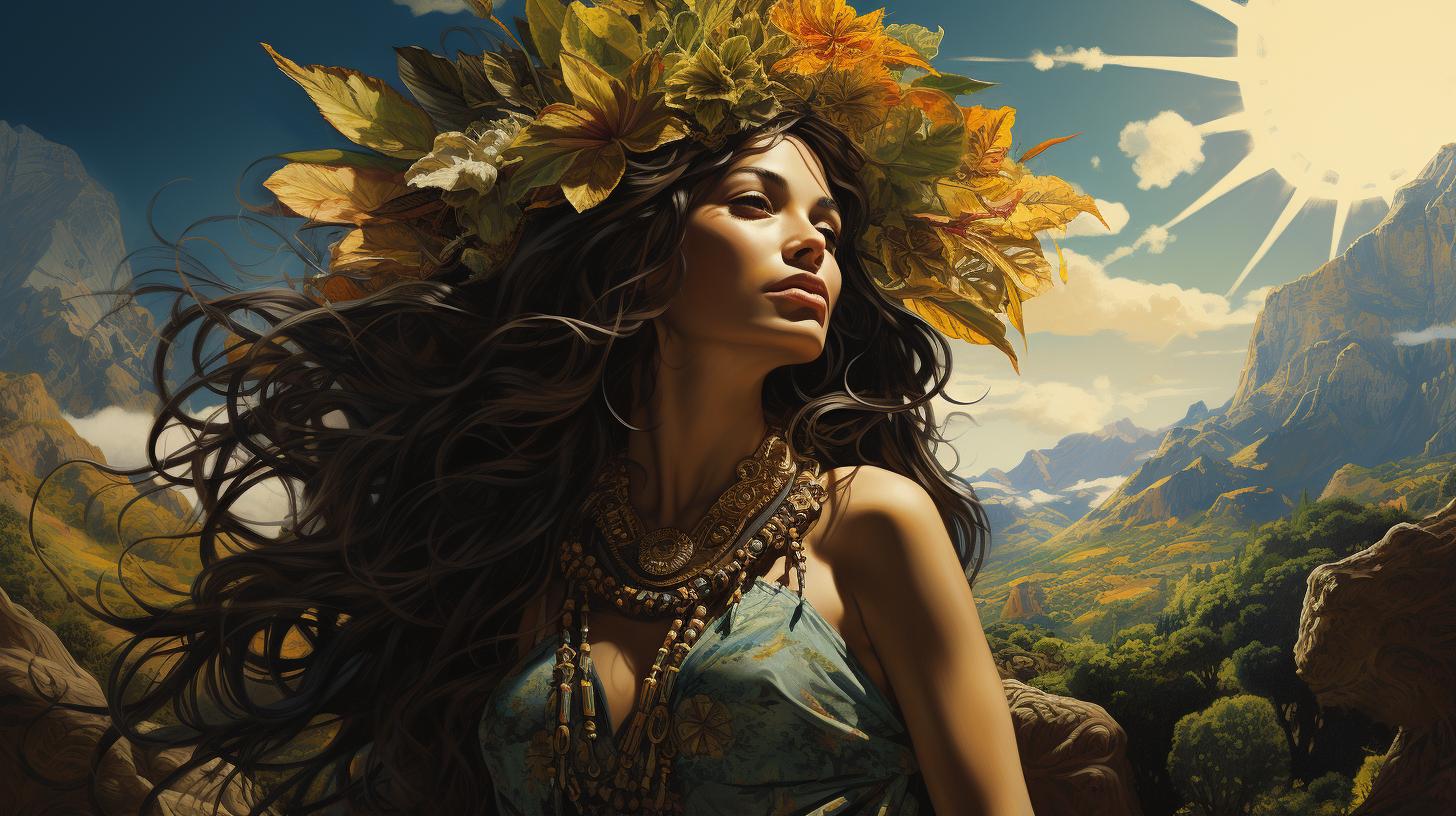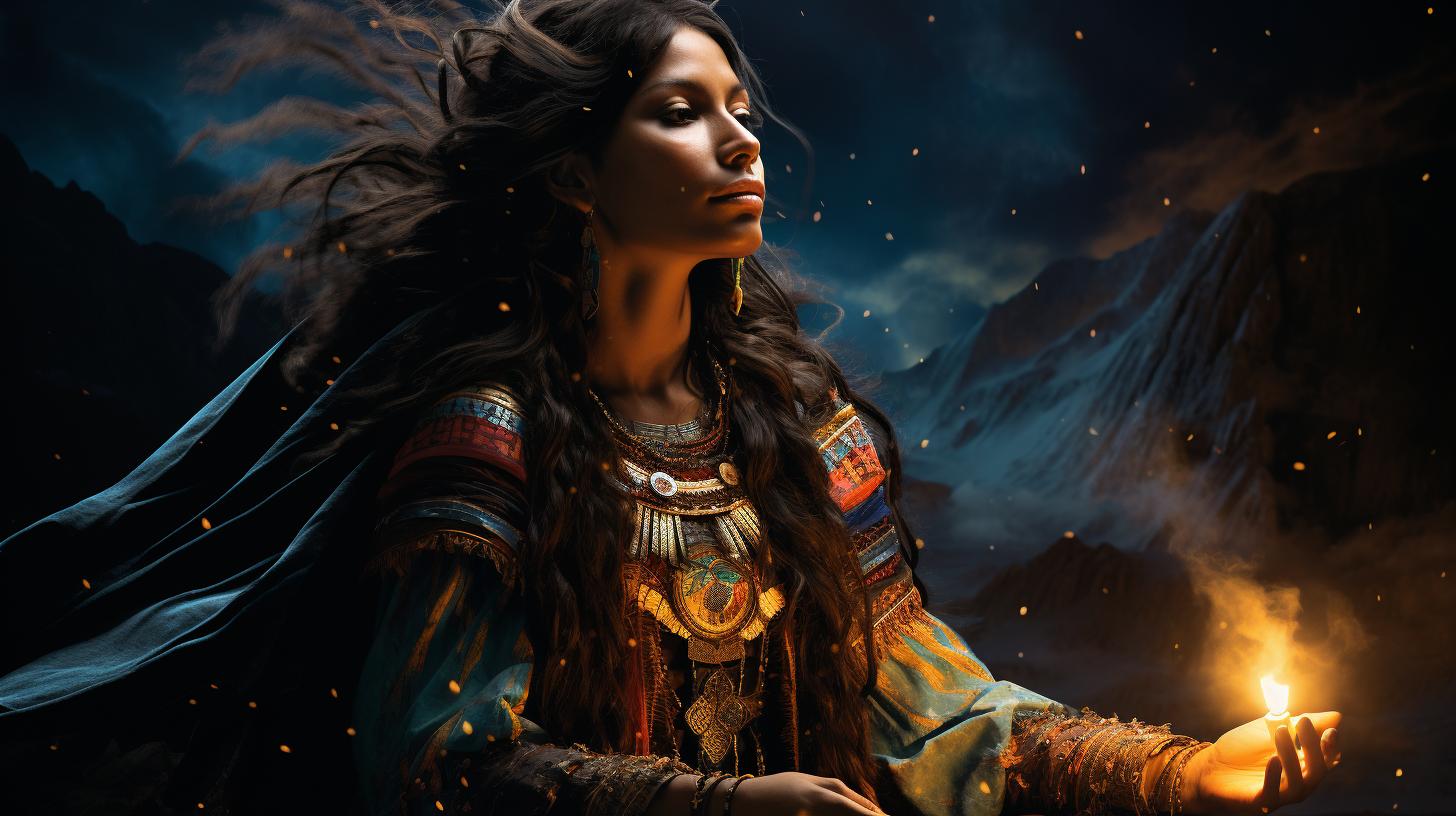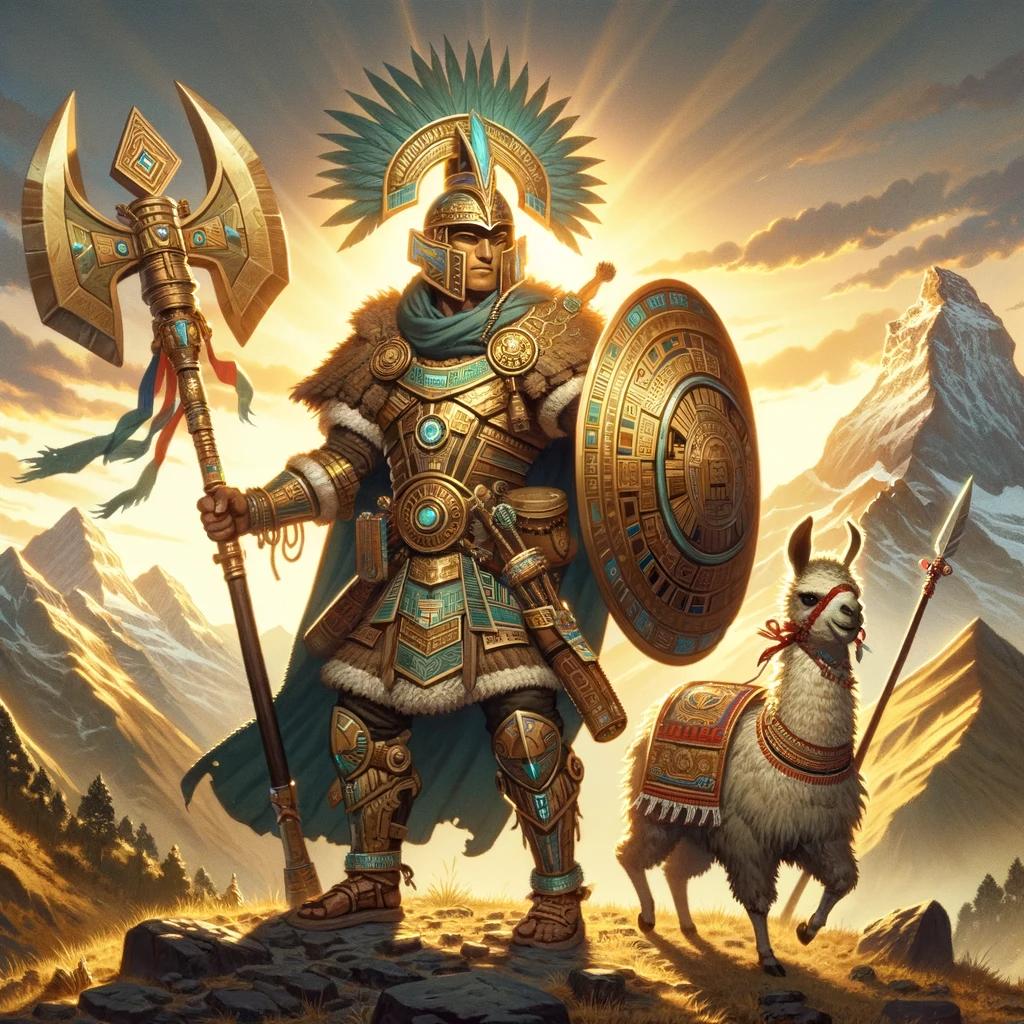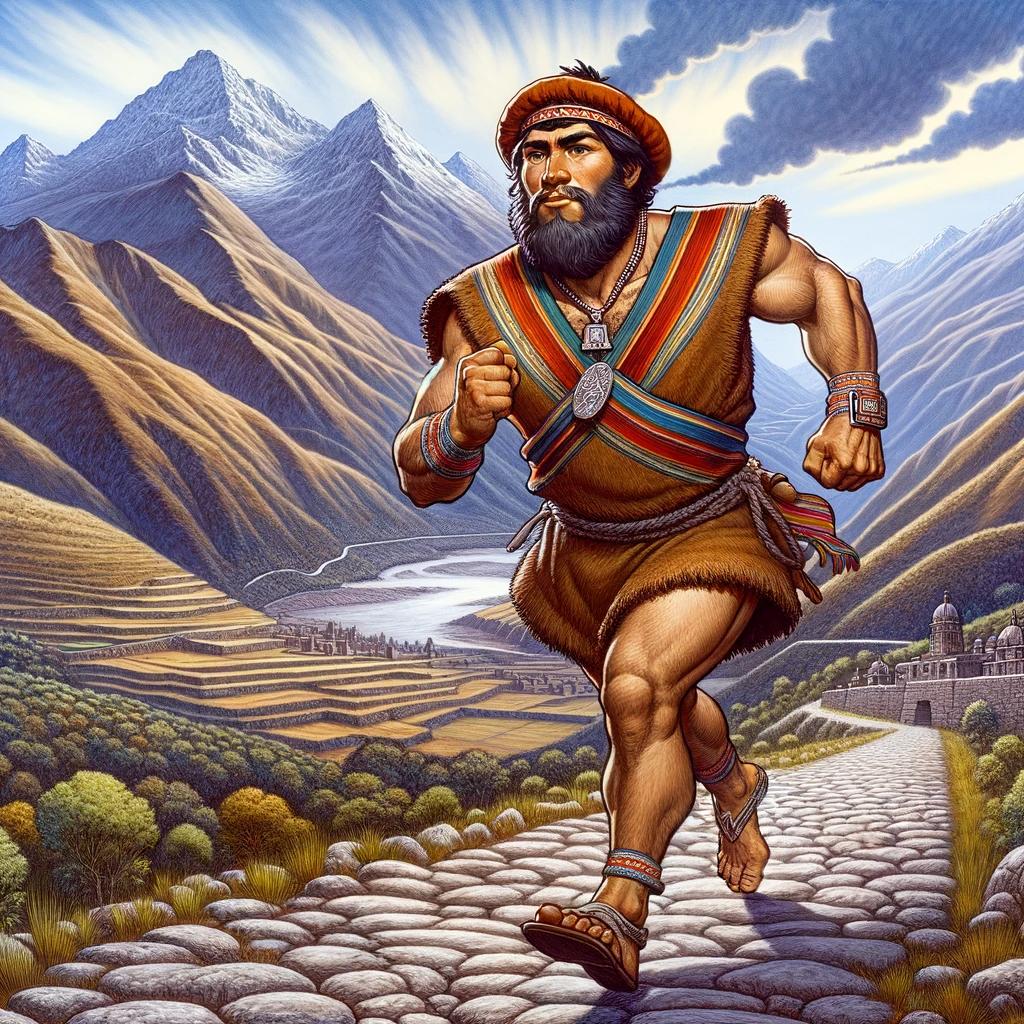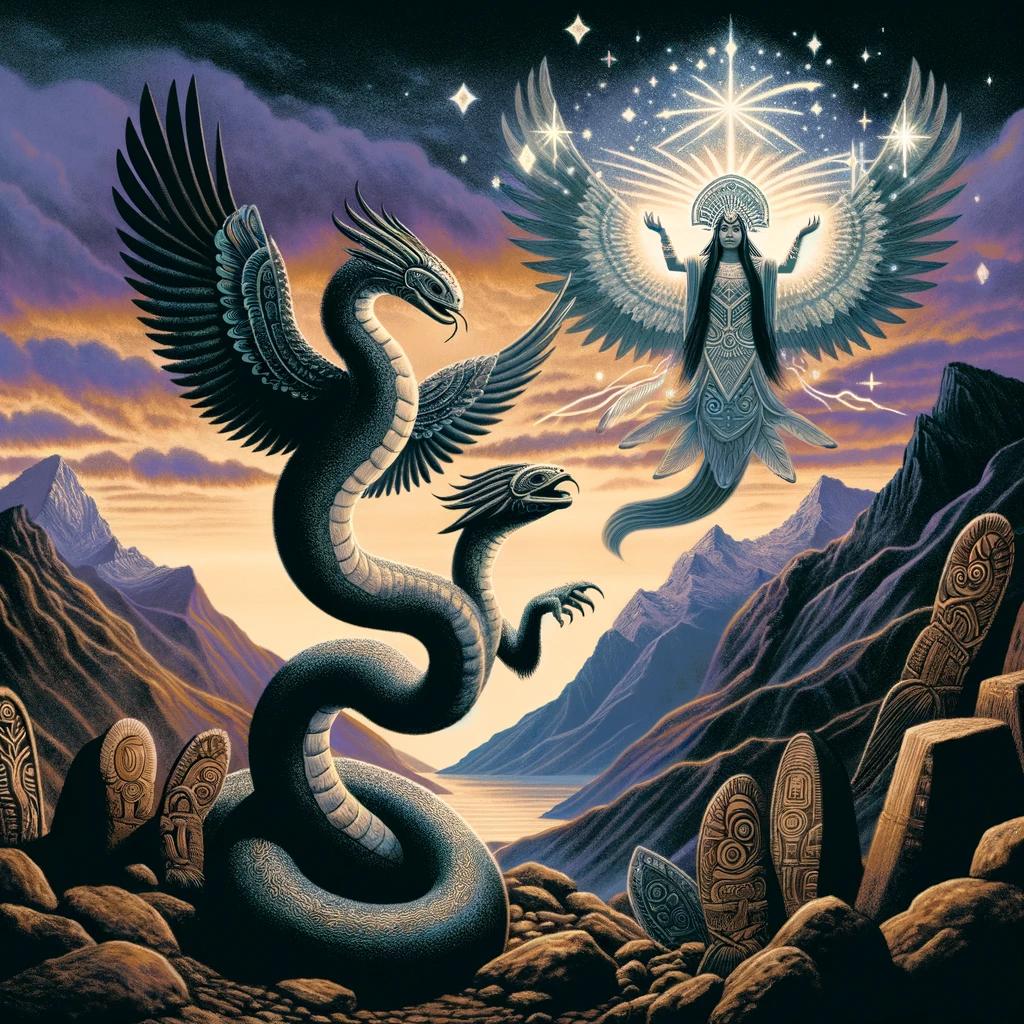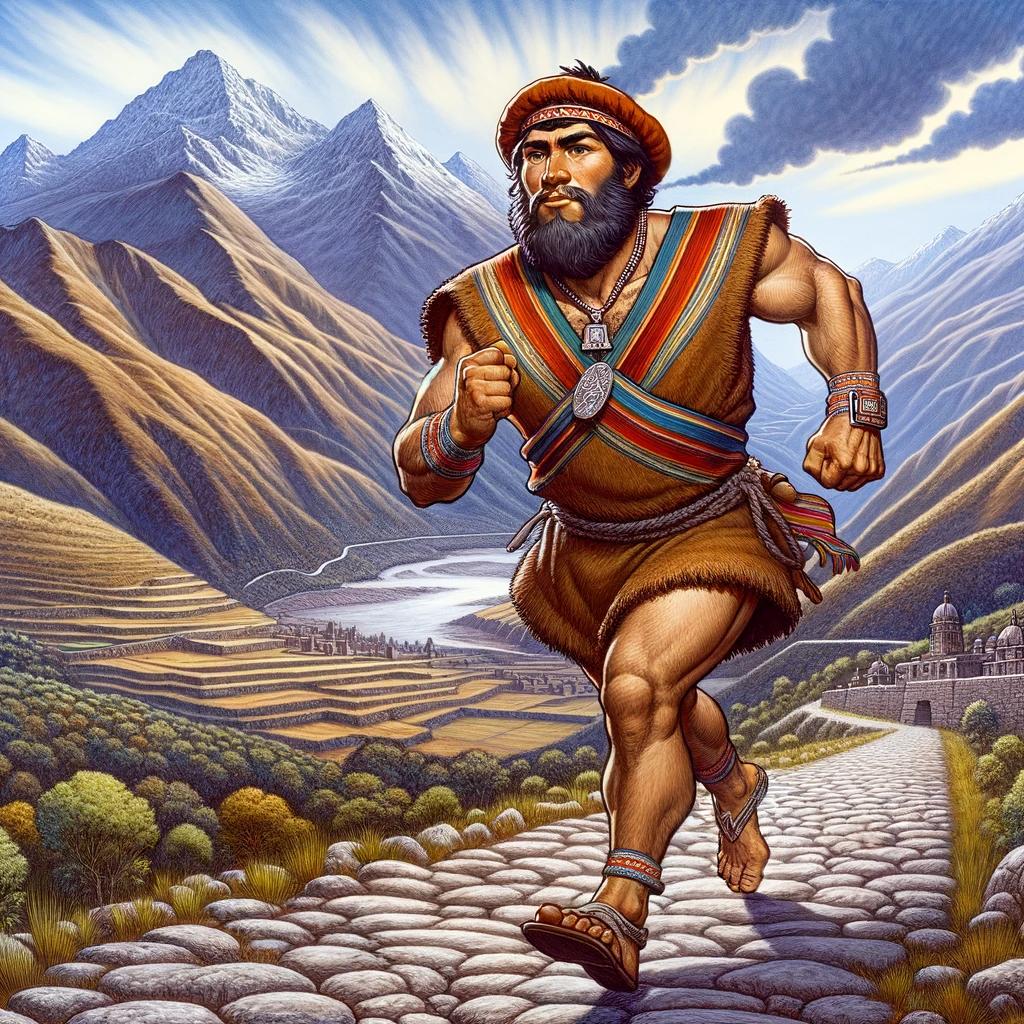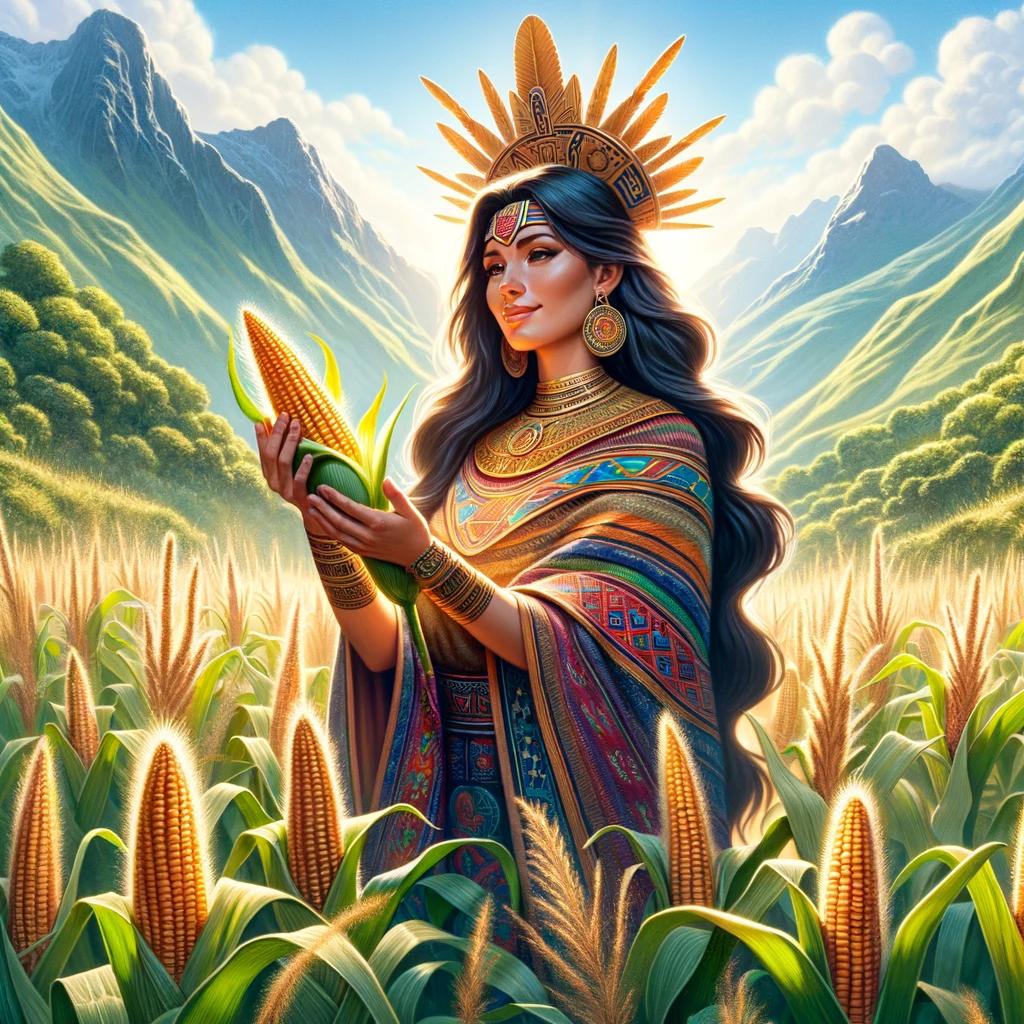Pachamama: The Inca Goddess of Fertility and Nature Explored
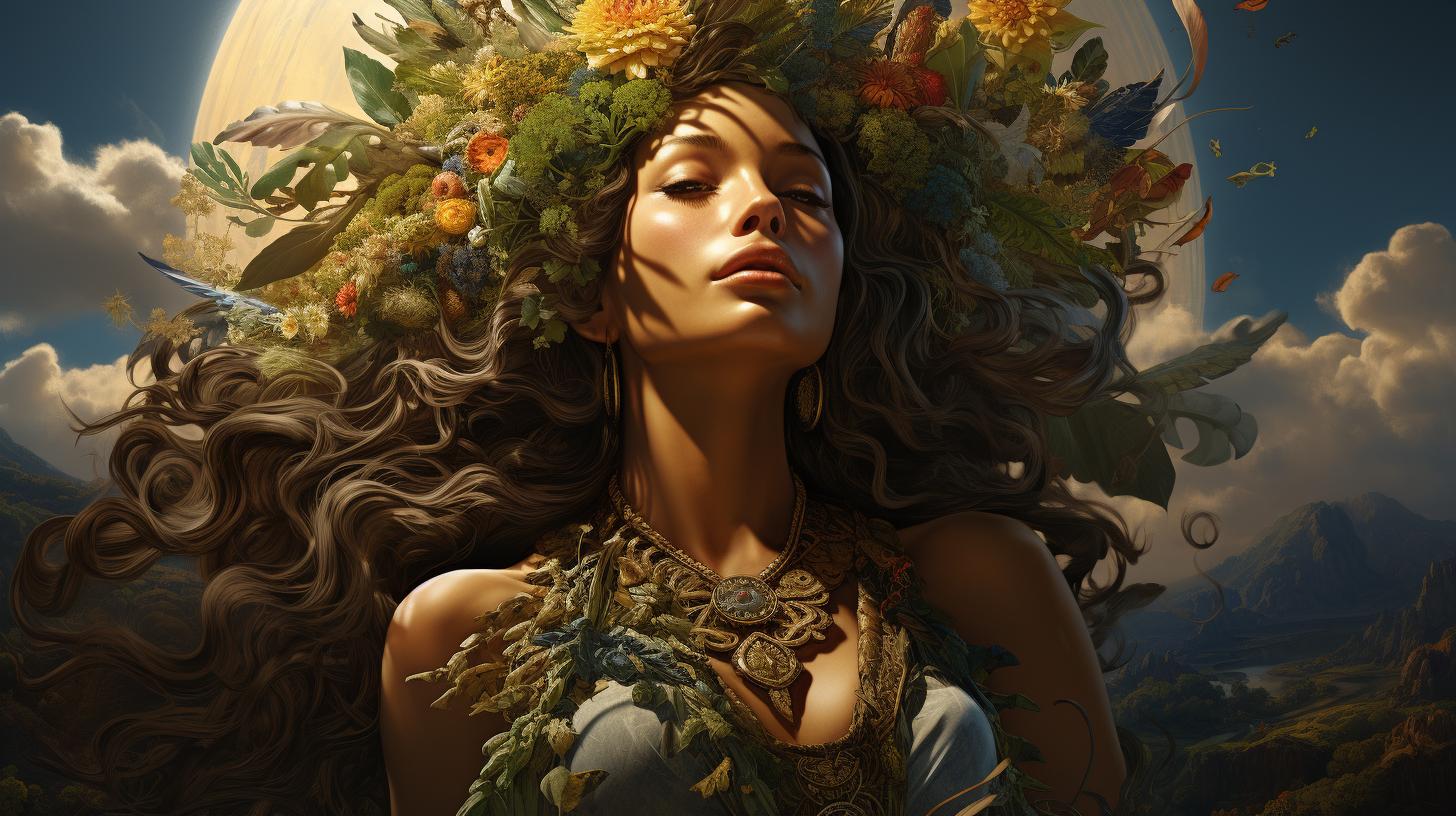
Pachamama, the Inca goddess of fertility and nature, holds great significance in the indigenous cultures of the Andes. Associated with mother earth, she is revered for her ability to cause earthquakes and her role as a deity.
This article provides an overview of Pachamama’s origins, worship rituals, and the syncretism with the Virgin Mary after Spanish colonization. It also explores the adoption of Pachamama in modern times, her cultural significance in Peru and Bolivia, and the environmental concerns surrounding her worship.
Additionally, we delve into the symbolism of Pachamama as the embodiment of Mother Earth and fertility.
Overview of Pachamama: The Inca Goddess of Fertility and Nature
Pachamama, the Inca goddess, holds immense significance in Andean cultures as a representation of fertility and the natural world. Revered by indigenous communities, she embodies the role of a mother earth and a powerful deity capable of causing earthquakes.
The fusion of indigenous beliefs and Catholicism during the Spanish colonization led to the association of Pachamama with the Virgin Mary in a practice known as syncretism.
Primarily worshipped within the region known as Tawantinsuyu, the former Inca Empire, Pachamama’s cult has expanded to encompass various areas of South America.
The environmental concerns tied to Pachamama are rooted in ancient beliefs that overexploitation of nature is equivalent to taking too much from her.
Ritual practices in tribute to Pachamama involve making toasts before gatherings and festivities, as well as performing the ritual known as challa.
In this ritual, a small amount of chicha, a traditional drink, is poured onto the ground as an offering to the goddess. Additionally, a special day of worship, called Martes de challa, involves burying food, throwing sweets, and burning incense to express gratitude for the harvest.
The central ritual associated with Pachamama is the Challa or Pago, which occurs in August and on the first Friday of each month. During this ceremony, offerings of food, beverages, coca leaves, and cigars are presented to Pachamama near a pond or stream.
Various other rituals take place on specific occasions, such as when embarking on a journey or passing by an apacheta, a stone mound used as a marker.
Throughout the year, festivities honoring Pachamama take place, with a particular abundance in August prior to the planting season.
These ceremonies often involve purification rituals aimed at dispelling malevolent spirits believed to be more prevalent during the colder winter month in the southern Andes. It is also customary to drink mate, a hot beverage, to ensure good luck.
In the Festival of Pachamama, a parade is held on Sundays, during which the oldest woman in the community is crowned as the ‘Queen of Pachamama of the Year.’ Indigenous women, especially the elderly, are revered as symbols of wisdom, life, fertility, and reproduction.
Pachamama has also been embraced by white and mestizo individuals in the Andes as part of the New Age movement.
They engage in weekly rituals invoking Pachamama, sometimes incorporating Quechua phrases alongside Spanish references. Additionally, they maintain a temple featuring a large rock symbolizing their beliefs and an earthen bowl representing Pachamama.
Furthermore, Pachamama’s worship has incorporated elements of Christianity, and many families in Peru practice both indigenous rituals and Catholicism side by side. The cultural significance of Pachamama extends to areas such as Machu Picchu and the Sacred Valley, where her presence is deeply intertwined with the indigenous Quechua language.
Pachamama’s symbolism as Mother Earth and the embodiment of fertility plays a profound role in indigenous cultures and continues to inspire reverence and rituals to this day.
Pachamama in Inca Mythology: Origins and Beliefs
According to Inca mythology, Pachamama holds a central place as the goddess of fertility and nature.
She is revered as a sacred force responsible for sustaining life and ensuring the abundance of crops and resources. Her origins trace back to the ancient Andean people and their deep connection with the natural world.
The Incas believed that Pachamama was a mother figure, representing the Earth itself. She was revered as a deity capable of both creating and destroying, as she held the power to cause earthquakes, a force considered essential for the cycle of life.
The Incas perceived Pachamama as a benevolent and nurturing force that sustained all living beings.
Pachamama’s association with fertility extended beyond the land to include human fertility as well. It was believed that she influenced the success of marriages, childbirth, and the growth of families.
The Incas regularly offered rituals and sacrifices to gain her favor and ensure prosperous and bountiful lives.
Throughout Inca society, Pachamama’s presence was deeply ingrained, and her worship was an integral part of daily life.
The rituals and traditions associated with her veneration were passed down through generations, representing a sacred connection between the people and the natural world.
These beliefs and practices related to Pachamama formed an essential foundation for the Inca civilization, shaping their spiritual and cultural identity.
The reverence for Pachamama provided a framework for ethical and harmonious interaction with the environment and its resources.
Syncretism and the Connection to the Virgin Mary
After the Spanish colonization, a fascinating syncretism occurred between the indigenous worship of Pachamama and the Catholic tradition. The figure of the Virgin Mary became associated with Pachamama, blending elements of the two belief systems.
Indigenous people, in an effort to preserve their ancestral practices, incorporated Pachamama into their Catholic rituals. They saw parallels between Pachamama as the nurturing mother earth and the Virgin Mary as the maternal figure of Christianity.
This syncretism allowed them to maintain their cultural identity while appearing to conform to the dominant religion.
As a result of this connection, religious celebrations and rituals include both Pachamama and the Virgin Mary.
Indigenous communities often offer food, beverages, and flowers to both entities during their ceremonies. They see Pachamama’s presence in the natural world, while acknowledging the Virgin Mary’s role as an intercessor between humans and the divine.
This syncretic blend of beliefs highlights the resilience and adaptability of indigenous cultures as they navigate the complexities of colonialism and cultural assimilation.
Pachamama Worship and Rituals by Indigenous Peoples
Pachamama, the revered Inca goddess, is honored through various worship rituals by indigenous peoples in the Andean region. These rituals play a significant role in maintaining a harmonious relationship between humans and nature, while paying tribute to Pachamama’s nurturing and life-giving powers.
Ritual Offerings and Challa: Honoring Pachamama
One of the key ways indigenous communities honor Pachamama is through ritual offerings and the ceremonial act known as challa. During these rituals, offerings of food, drinks, coca leaves, and cigarettes are presented to Pachamama as a sign of gratitude and reciprocity for the sustenance provided by the earth.
The challa ritual often takes place in outdoor spaces, such as near rivers, lakes, or mountains, which are believed to be sacred sites connected to Pachamama. Participants pour a small amount of chicha, a traditional beverage, onto the ground as an offering while expressing their gratitude and prayers for blessings.
Martes de Challa: Special Worship Day
The indigenous tradition includes a special worship day called Martes de Challa, typically celebrated on Tuesdays. On this day, communities come together to perform rituals that involve burying food, tossing sweets, and burning incense as offerings to express appreciation for abundant harvests and seek Pachamama’s continued blessings.
Festivities and Celebrations in Honor of Pachamama
Pachamama’s worship is not limited to specific days but is integrated into various festivities and celebrations throughout the year. These vibrant and joyful events provide opportunities for indigenous communities to express their deep connection with nature and gratitude for Pachamama’s blessings.
During these festivities, traditional dances, music, and colorful processions are accompanied by rituals honoring Pachamama. Indigenous people come together to share traditional dishes and drinks, reinforcing their bond with each other and with the earth.
One example of such celebrations is the Festival of Pachamama, where a parade takes place and the community chooses an elderly woman as the ‘Queen of Pachamama of the Year.’ This symbolic honor recognizes the wisdom, life, fertility, and reproduction traditionally associated with older indigenous women.
The parade, escorted by gauchos on horses, serves as the highlight of the festival, creating a vibrant display of cultural pride and reverence for Pachamama.
- Perform ritual offerings and challa ceremonies to express gratitude and reciprocity.
- Celebrate Martes de Challa as a special worship day filled with rituals and offerings.
- Participate in festive celebrations throughout the year, showcasing traditional dances, music, and processions.
Pachamama in Modern Times: Adoption by Non-Indigenous People
In contemporary times, the worship of Pachamama has transcended cultural boundaries and has been embraced by non-indigenous individuals, particularly in the Andean regions.
This adoption of Pachamama as part of the New Age movement and modern spirituality reflects a growing interest in reconnecting with nature and seeking spiritual connections outside traditional religious structures.
Non-indigenous followers of Pachamama often engage in weekly rituals that invoke her presence, drawing inspiration from the indigenous Quechua culture.
These rituals may incorporate elements of Quechua language, invoking Pachamama’s name in prayers and chants.
- They create spaces of reverence, such as temples or altars, dedicated to Pachamama. These spaces often feature symbolic representations, such as a large rock symbolizing Pachamama’s presence and a bowl of soil representing her connection to the Earth.
- Weekly gatherings or ceremonies are held, where participants offer their gratitude to Pachamama and seek blessings for their lives.
- Offerings of food, drinks, and other items, such as coca leaves or cigarettes, are presented as an expression of appreciation to Pachamama.
- During these rituals, people connect with the earth by touching the ground, acknowledging their connection to Pachamama and the natural world.
This adoption by non-indigenous people demonstrates a desire to reconnect with nature, honor the Earth, and acknowledge the interdependence of all living beings.
It serves as a testament to the enduring relevance and universal appeal of Pachamama as a symbol of Mother Earth and fertility.
Pachamama and Environmental Concerns: Taking Too Much from the Earth
The worship of Pachamama extends beyond spiritual beliefs, as it encompasses a profound respect for the environment.
Indigenous peoples associate taking too much from the Earth with taking too much from Pachamama herself. This perspective reflects a deep understanding of the interconnectedness between humans and nature, where the well-being of one relies on the well-being of the other.
The concept of sustainability is embedded in the reverence for Pachamama. It teaches us to live in harmony with the Earth and to be mindful of our actions. Taking too much from nature is seen as disruptive to the delicate balance, leading to environmental degradation and the depletion of natural resources.
From this lens, the exploitation of the environment is viewed as a direct offense against Pachamama and her ability to provide sustenance and fertility.
In recent years, the concerns about environmental impact have intensified with the recognition of climate change and ecological crises. Many indigenous communities, inspired by their devotion to Pachamama, have become advocates for environmental preservation and sustainable practices.
They emphasize the importance of preserving natural habitats, conserving water sources, and protecting biodiversity.
These concerns are not limited to indigenous communities alone. Pachamama’s symbolic representation as Mother Earth resonates with people from different backgrounds, including those who identify with the New Age movement.
Many individuals, regardless of their cultural heritage, have embraced Pachamama as a source of inspiration for their own environmental activism and their efforts to promote ecological awareness to ensure a better future for our planet.
By recognizing the connection between the health of the Earth and the veneration of Pachamama, we are reminded of our responsibility to act as stewards of the environment. The teachings of Pachamama encourage us to adopt sustainable practices and to prioritize the well-being of our planet and future generations.
Through this lens, we can strive for a more harmonious existence, where humans and nature coexist in balance and mutual respect.
Pachamama and Cultural Significance in Peru and Bolivia
Pachamama holds a significant cultural importance in Peru and Bolivia, where indigenous traditions have deep roots. Let’s explore the specific aspects of Pachamama’s cultural significance in these regions.
Pachamama in Machu Picchu and Sacred Valley
The ancient Inca city of Machu Picchu, nestled in the breathtaking Andes Mountains, is not only a UNESCO World Heritage Site but also a place where the presence of Pachamama is strongly felt.
The surrounding Sacred Valley, with its awe-inspiring landscapes, carries a spiritual essence that connects with Pachamama’s association with nature.
Visitors to Machu Picchu and the Sacred Valley often witness various rituals and offerings dedicated to Pachamama.
Indigenous communities, in harmony with their ancestral practices, continue to honor and pay homage to the goddess at these sacred sites.
Pachamama and Indigenous Quechua Language
The indigenous Quechua language, spoken by many in Peru and Bolivia, carries a deep connection to Pachamama. The Quechua people view their language as a vessel to communicate with the goddess, reinforcing their cultural heritage and spiritual bond with Pachamama.
The Quechua language resonates with the belief systems and values associated with Pachamama, reflecting an intimate connection between the people and the goddess. It serves as a reminder of the enduring cultural significance of Pachamama in the lives and identities of indigenous communities in Peru and Bolivia.
Pachamama in New Age Movement and Modern Spirituality
Within the realm of New Age spirituality, Pachamama has gained significant recognition and appreciation. Many people, including non-indigenous individuals in the Andean region, have embraced Pachamama as a symbol of connection with the natural world, spiritual abundance, and harmony.
The New Age movement, which emphasizes spiritual exploration, personal growth, and holistic beliefs, has found resonance in Pachamama’s representation of Mother Earth and fertility. People are drawn to the idea of honoring and nurturing the environment, seeking a deeper understanding of interconnectedness with nature.
Pachamama’s principles align with the New Age philosophy of finding spirituality in the natural world, recognizing the inherent wisdom and divinity present in all living beings. This connection prompts individuals to engage in various practices that honor and seek guidance from Pachamama.
Devotees of Pachamama in the New Age movement often partake in rituals and ceremonies inspired by indigenous traditions. These rituals involve offerings of natural elements such as flowers, herbs, and crystals, as well as meditation and energy healing practices aimed at attuning oneself with the energy of Pachamama.
In addition to the spiritual practices, Pachamama has also become an inspiration for artwork, music, and eco-conscious initiatives. Her image is often depicted in paintings, sculptures, and jewelry, serving as a reminder of our collective responsibility towards the Earth and its preservation.
The popularity of Pachamama in the New Age movement reflects a growing societal awareness of the need for sustainability, ecological balance, and reconnecting with nature. It represents a conscious effort to restore a sense of harmony and reverence for the Earth in the face of environmental challenges.
As modern spirituality continues to evolve, Pachamama’s presence and influence persist, reminding us of the importance of honoring and nurturing the sacred bond between humanity and the natural world.
Exploring the Symbolism of Pachamama: Mother Earth and Fertility
The symbolism of Pachamama revolves around her representation as Mother Earth and her association with fertility.
She is revered as the nurturing force that sustains life and provides abundance to the world. The indigenous peoples of the Andes view her as the ultimate embodiment of nature’s power and life-giving energy.
As Mother Earth, Pachamama symbolizes the interconnectedness of all living beings and the environment. She embodies the cycles of birth, growth, and decay, highlighting the cyclical nature of life and the importance of balance.
The reverence for Pachamama emphasizes the need to respect and protect the natural world, ensuring its fertility and sustainability for future generations.
One of the key symbols associated with Pachamama is the concept of fertility.
She is believed to hold the power to bring forth bountiful harvests, abundant rainfall, and overall prosperity. This symbolism highlights the deep connection between humans and nature, emphasizing the reliance on the earth for sustenance and survival.
Pachamama’s symbolism extends beyond physical fertility to encompass spiritual and emotional nourishment. She is seen as a source of spiritual guidance and wisdom, offering her blessings to those who honor and respect her.
Her role as a divine mother figure embodies compassion, love, and the nurturing qualities essential for the well-being of individuals and communities.
The symbolism of Pachamama as Mother Earth and fertility permeates various aspects of Andean culture and rituals.
From the offerings of food and drinks during worship ceremonies to the agricultural practices guided by her blessings, Pachamama’s symbolism intertwines with everyday life, reinforcing the significance of harmony between humans and the natural world.
By exploring the symbolism of Pachamama, we gain a deeper understanding of the reverence and respect given to Mother Earth in Andean cultures. It highlights the interconnectedness of all life forms and the importance of nurturing and sustaining the environment for future generations.
Pachamama’s symbolism continues to inspire a sense of responsibility and environmental consciousness, reminding us of the delicate balance needed for a harmonious relationship with our planet.
.











